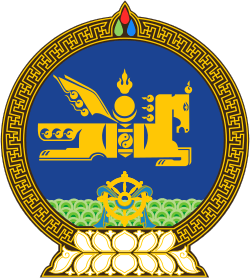Khata
| Khata | |||||||||
|
A Tibetan khata. | |||||||||
| Tibetan name | |||||||||
|---|---|---|---|---|---|---|---|---|---|
| Tibetan | ཁ་བཏགས་ | ||||||||
| |||||||||
| Mongolian name | |||||||||
| Mongolian | хадаг | ||||||||

A khata (Tibetan: ཁ་བཏགས་ ; Dzongkha: དར་, Dhar, Mongolian : ᠬᠠᠳᠠᠭ / Mongolian: хадаг / IPA: [χɑtɑk], khadag or hatag, Nepali: खतक khada, Chinese 哈达; pinyin: hādá) is a traditional ceremonial scarf in tengrism[1] and Tibetan Buddhism. It originated in Tibetan culture and is common in cultures and countries where Tibetan Buddhism is practiced or has strong influence.
The khata symbolizes purity and compassion and are worn or presented with incense at many ceremonial occasions, including births, weddings, funerals, graduations and the arrival or departure of guests. It is usually made of silk. Tibetan khatas are usually white, symbolising the pure heart of the giver,[2][3] though it is quite common to find yellow-gold khata as well. Tibetan, Nepali, and Bhutanese khatas feature the ashtamangala. There are also special multi-colored khatas. Mongolian khatas are usually blue, symbolizing the blue sky. In Mongolia, khatas are also often tied to ovoos, stupas, or special trees and rocks.
References
- ↑ "The Eternal Blue Sky" (PDF). Hoop. 2014. Retrieved 2016-06-19.
- ↑ Staff. "Khata/Tibet "roof of the world"". Oracle ThinkQuest Education Foundation. Retrieved 2010-02-04.
- ↑ "Ethnic Culture Thrives After Sichuan Quake". Chengdu: China Daily. 2012-05-10. Retrieved 2012-05-15.
| Wikimedia Commons has media related to Khata / Haddak. |
